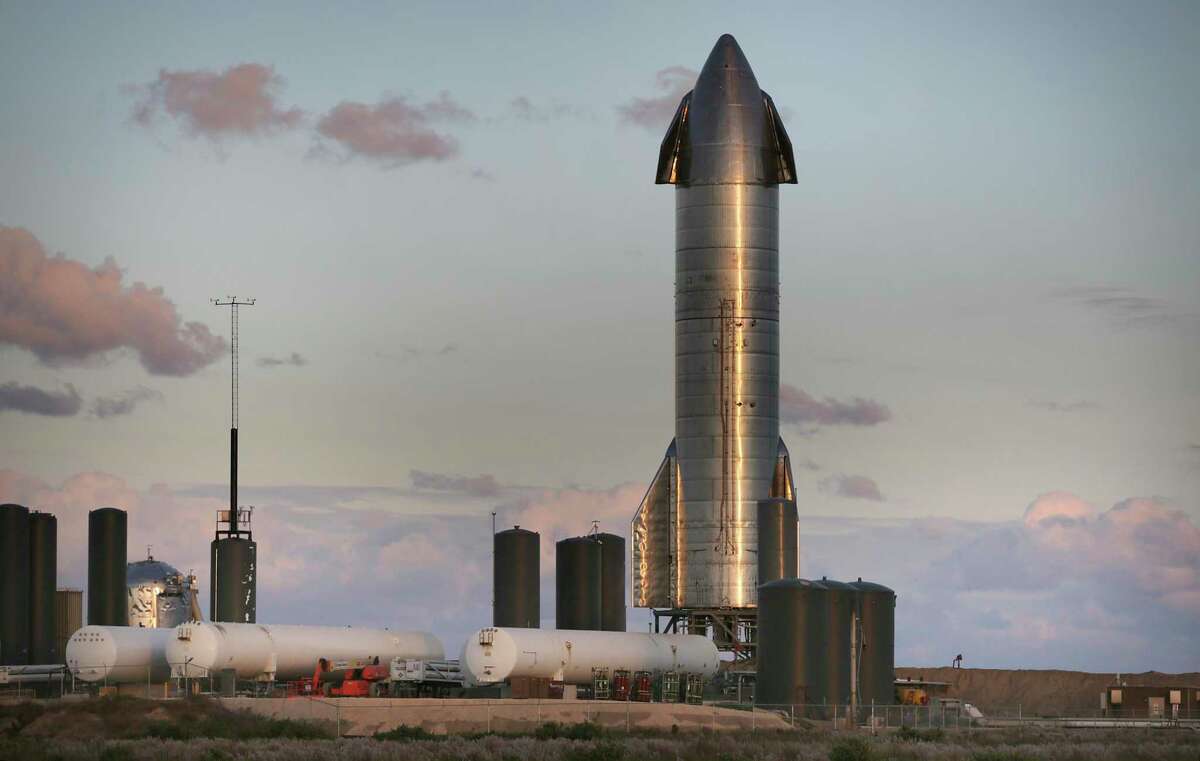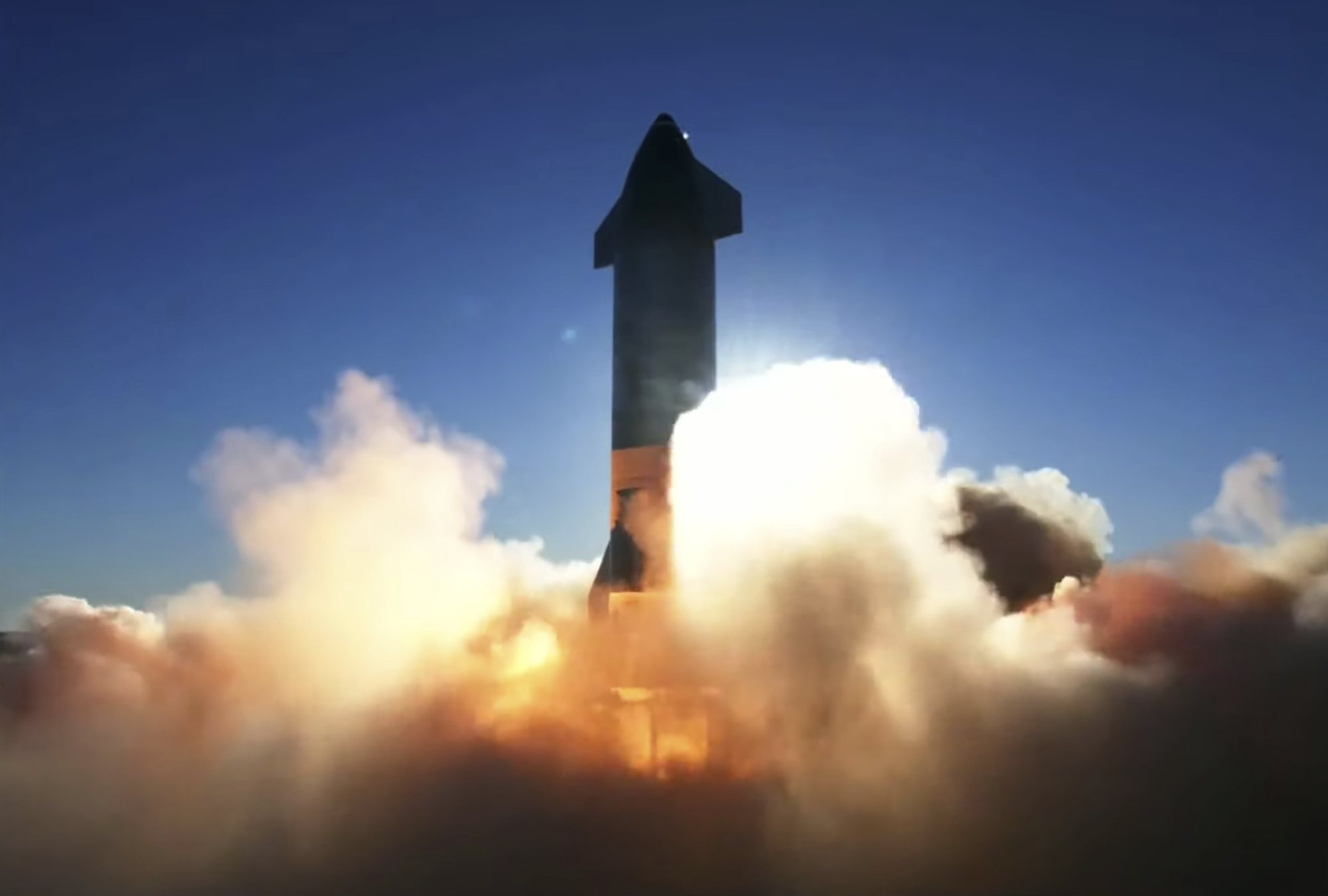As the Starship launch approaches, the world holds its breath in anticipation. This colossal undertaking, a testament to human ingenuity, marks a new era in space exploration. Join us as we delve into the intricacies of this extraordinary endeavor, from launch site preparation to post-launch operations.
The Starship, a reusable spacecraft designed by SpaceX, represents a paradigm shift in space travel. Its massive scale and advanced capabilities promise to revolutionize access to space, enabling ambitious missions to Mars and beyond.
Launch Site Preparation: Starship Launch
Prior to the launch, extensive preparations are undertaken at the launch site to ensure a successful mission. These preparations encompass the construction of the launch pad, the establishment of essential infrastructure, and the implementation of comprehensive safety measures.
The launch pad, a crucial component of the launch site, is meticulously constructed to withstand the immense forces generated during liftoff. It comprises a sturdy platform that accommodates the launch vehicle and provides stability during the initial ascent phase. Additionally, the launch pad is equipped with specialized systems for fueling, ignition, and launch control.
Infrastructure
The launch site also features a comprehensive infrastructure to support the launch operations. This infrastructure includes facilities for vehicle assembly, propellant storage, and mission control. The assembly facility provides a controlled environment for the integration of the launch vehicle and its payload.
Propellant storage facilities ensure the safe handling and storage of the propellants used during the launch.
Safety Measures, Starship launch
Safety is paramount at the launch site. Stringent measures are implemented to minimize risks and protect personnel, equipment, and the surrounding environment. These measures include the establishment of safety zones, the use of specialized fire suppression systems, and the implementation of emergency response plans.
Additionally, the launch site is closely monitored to detect any potential hazards or anomalies.
Starship Design and Assembly
The Starship spacecraft is a reusable, super-heavy-lift launch vehicle and spacecraft system designed by SpaceX for interplanetary travel. It is intended to be fully reusable and capable of transporting both crew and cargo to Mars and other destinations in the solar system.
The Starship is a two-stage system, consisting of a Super Heavy booster and a Starship spacecraft. The Super Heavy booster is designed to lift the Starship into low Earth orbit (LEO), while the Starship spacecraft is designed to continue on to its destination.
Key Design Features
- Fully reusable:The Starship is designed to be fully reusable, both the Super Heavy booster and the Starship spacecraft. This will significantly reduce the cost of space travel.
- Super-heavy lift:The Starship is the most powerful rocket ever built, with a liftoff thrust of 17 million pounds. This will allow it to carry large payloads to orbit, including crew, cargo, and fuel.
- Interplanetary travel:The Starship is designed to be capable of interplanetary travel. It is being developed to transport humans and cargo to Mars and other destinations in the solar system.
Materials and Propulsion
The Starship is made of stainless steel, which is strong and lightweight. The Super Heavy booster uses 33 Raptor engines, while the Starship spacecraft uses 6 Raptor engines. The Raptor engine is a methane-fueled rocket engine that is designed to be reusable.
Assembly
The Starship is assembled at SpaceX’s Starbase facility in Boca Chica, Texas. The Super Heavy booster is assembled first, followed by the Starship spacecraft. The Starship spacecraft is then integrated with the Super Heavy booster.
Payload Integration and Mission Planning
Payload integration and mission planning are critical aspects of Starship launches. These processes ensure the payload is safely and efficiently integrated into the Starship and that the mission is meticulously planned to achieve its objectives.
Payload Integration
Integrating the payload into the Starship involves several key procedures. First, the payload is carefully inspected and tested to ensure it meets the required specifications. This includes verifying its size, weight, and compatibility with the Starship’s payload bay. The payload is then loaded into the Starship’s payload bay using specialized equipment and techniques to ensure its securement during launch and flight.
Mission Planning
Mission planning for Starship launches is a complex process that involves determining the launch trajectory, mission objectives, and contingency plans. The launch trajectory is carefully calculated to optimize the Starship’s performance and ensure it reaches its intended destination. The mission objectives are clearly defined, and contingency plans are developed to address potential risks and ensure the safety of the payload and the Starship.
Countdown and Launch Sequence
The countdown to launch is a critical and highly choreographed process that involves numerous systems and personnel working in unison. It begins hours before the scheduled liftoff and culminates in the ignition of the rocket engines and the ascent of the spacecraft.
Countdown Procedures
The countdown is typically divided into several phases, each with specific tasks and milestones. The exact timeline may vary depending on the mission and the launch vehicle, but the general sequence is as follows:
- T-24 hours:Final preparations are made to the spacecraft and launch vehicle, including fueling and payload integration.
- T-4 hours:The launch crew begins to assemble at the launch site and conducts final checks on the systems.
- T-1 hour:The launch vehicle is powered up and the countdown enters its final phase.
- T-10 minutes:The spacecraft is sealed and the launch crew retreats to a safe distance.
- T-0:The rocket engines ignite, generating enormous thrust that propels the spacecraft into the sky.
Role of Various Systems and Personnel
A wide range of systems and personnel play crucial roles in ensuring a smooth launch:
- Launch Control:The command center that oversees the countdown and launch sequence.
- Mission Control:The team responsible for monitoring the spacecraft’s health and trajectory after liftoff.
- Launch Vehicle:The rocket that provides the thrust to propel the spacecraft into orbit.
- Spacecraft:The payload that carries the astronauts, scientific instruments, or other cargo.
- Ground Support Equipment:The systems and infrastructure used to support the launch vehicle and spacecraft.
The successful execution of the countdown and launch sequence requires the seamless coordination of all these elements, ensuring a safe and efficient ascent into space.
Post-Launch Operations

Once the Starship has successfully launched, it will embark on a series of maneuvers to reach its intended orbit. These operations include separation of the booster stage, trajectory correction, and orbit insertion.
Booster Stage Separation
After launch, the Starship’s booster stage will separate from the spacecraft. This is accomplished through a controlled explosion that disconnects the two stages. The booster stage will then fall back to Earth, while the spacecraft continues its ascent.
Trajectory Correction and Orbit Insertion
After booster separation, the Starship will perform a series of trajectory correction maneuvers to adjust its course and reach its desired orbit. These maneuvers involve firing the spacecraft’s engines to change its velocity and trajectory. Once the spacecraft is in the correct orbit, it will perform a final burn to insert itself into the desired orbital plane.
Landing and Recovery
The successful conclusion of a Starship mission involves the precise execution of landing and recovery operations. This critical phase encompasses the preparation of the landing site, the implementation of a meticulously choreographed landing sequence, and the efficient recovery of the Starship and its payload.
Landing Site Preparation
Prior to the Starship’s return to Earth, a suitable landing site is meticulously selected and prepared. The site must possess ample space, clear of obstacles, and offer a stable surface capable of withstanding the impact of the landing. In some cases, this may necessitate the construction of a dedicated landing pad or the reinforcement of an existing surface.
Landing Sequence
As the Starship approaches Earth’s atmosphere, it undergoes a series of maneuvers to decelerate and prepare for landing. The spacecraft’s retro rockets ignite, providing a controlled descent. As the Starship descends through the atmosphere, parachutes are deployed to further slow its speed.
The precise timing and coordination of these maneuvers are crucial to ensure a safe and accurate landing.
Recovery Operations
Once the Starship has successfully landed, recovery operations commence. These operations involve securing the spacecraft, recovering any deployed parachutes, and retrieving the payload. Specialized equipment and personnel are deployed to safely extract the payload and transport it to a designated location for further processing and analysis.
The recovery operations also include the inspection and maintenance of the Starship to ensure its readiness for future missions.
Environmental Impact and Safety
The launch of a Starship rocket has the potential to impact the environment in several ways. The combustion of rocket fuel can release pollutants into the atmosphere, and the noise from the launch can disturb wildlife and nearby communities. SpaceX has taken several measures to mitigate these impacts, including using a cleaner-burning fuel and implementing noise reduction technologies.
Pollution Control
The Starship uses a methane-fueled engine, which produces fewer pollutants than traditional rocket fuels. Additionally, SpaceX has developed a closed-loop system that recycles the rocket’s exhaust gases, further reducing emissions.
Noise Reduction
SpaceX has implemented several noise reduction technologies on the Starship, including a water curtain that surrounds the launch pad and a sound suppression system that directs the noise away from nearby communities.
Final Conclusion

The Starship launch is a pivotal moment in the annals of space exploration. It represents not only a technological marvel but also a symbol of humanity’s unwavering pursuit of the unknown. As the Starship embarks on its journey, we eagerly await the discoveries and advancements it will bring to our understanding of the cosmos.